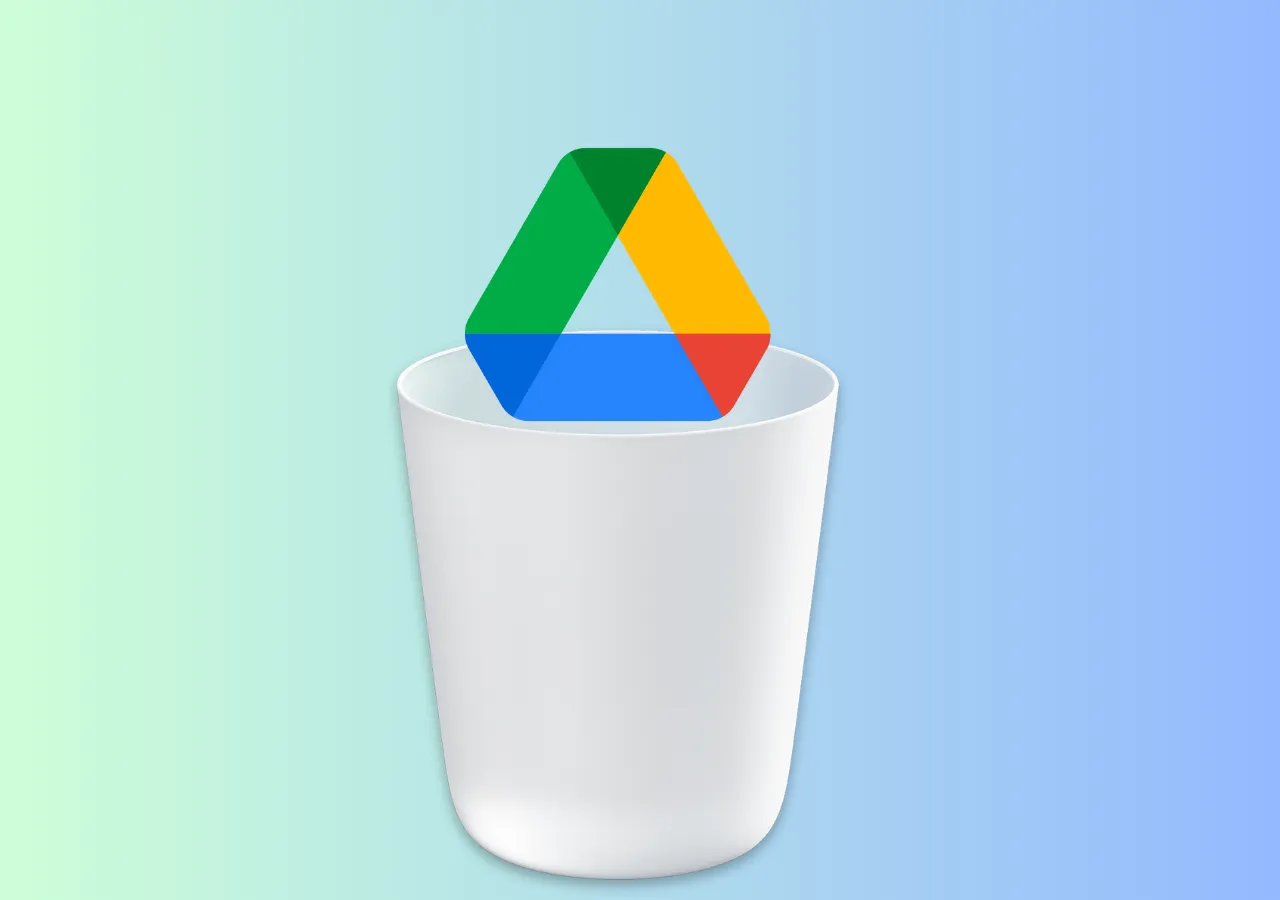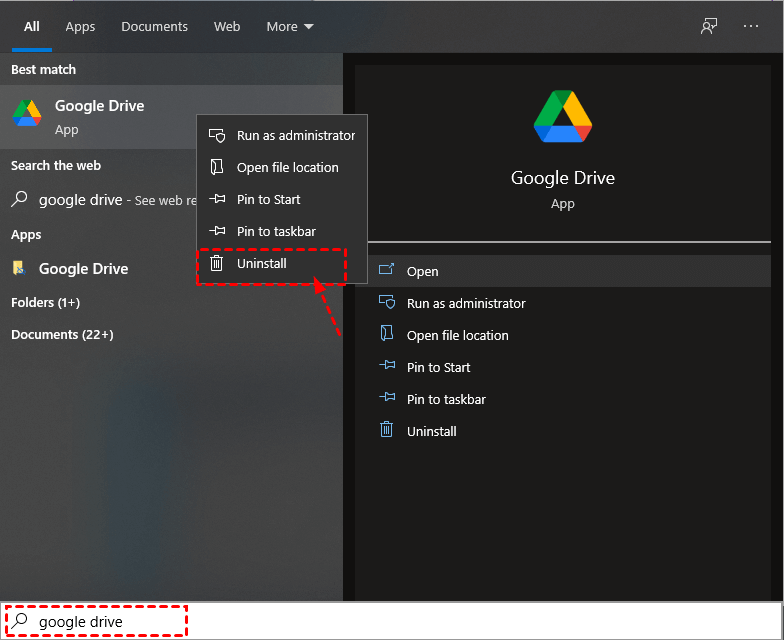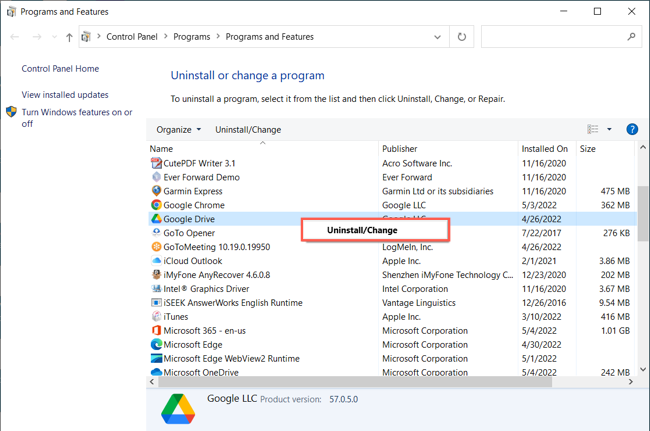Complete Guide: Remove Google Drive

In today's digital world, online storage solutions have become an integral part of our lives, with Google Drive being one of the most popular choices. However, there may come a time when you need or choose to part ways with this cloud storage service. Whether it's due to privacy concerns, a switch to alternative platforms, or a simple change in storage preferences, the process of removing Google Drive and its associated data can be a complex task. This comprehensive guide aims to provide a step-by-step breakdown of the process, offering a seamless and secure way to detach yourself from Google Drive.
Understanding the Implications

Before we delve into the removal process, it’s crucial to understand the potential consequences and implications. Removing Google Drive means more than just deleting the application or logging out of your account. It involves a thorough data migration or deletion process, ensuring that your personal information and files are either safely transferred to a new platform or permanently erased.
Furthermore, Google Drive is intricately linked with other Google services, such as Gmail, Google Photos, and Google Docs. Therefore, the removal process can impact these services as well. It's essential to be aware of these interdependencies and plan accordingly to avoid any unintended data loss or service disruptions.
Data Backup and Migration
One of the primary considerations when removing Google Drive is the fate of your stored data. Simply deleting the app or account won’t erase your files; they will remain on Google’s servers until explicitly deleted. Therefore, it’s crucial to have a backup plan in place.
Start by downloading and saving all your important files and documents to a local storage device, such as an external hard drive or a USB stick. This ensures that you have a physical copy of your data, providing peace of mind and preventing any potential loss.
If you wish to migrate your data to another cloud storage service, research and choose a platform that suits your needs. Popular alternatives to Google Drive include Dropbox, OneDrive, and iCloud. Each of these services offers its own unique features and storage plans, so it's important to compare and select the one that best aligns with your requirements.
Once you've decided on a new platform, initiate the migration process. Most cloud storage services provide easy-to-use tools and guides to help you transfer your data seamlessly. Follow their instructions to ensure a smooth transition, and don't forget to verify that all your files have been successfully transferred before proceeding with the removal of Google Drive.
| Cloud Storage Platform | Features |
|---|---|
| Dropbox | Simple file sharing, collaboration tools, and seamless syncing across devices. |
| OneDrive | Integrated with Microsoft Office, offering robust file storage and collaboration features. |
| iCloud | Ideal for Apple users, providing seamless integration with iOS devices and Mac computers. |

Privacy and Security Considerations
When deciding to remove Google Drive, privacy and security are often key concerns. Google, like many tech giants, collects and processes a vast amount of user data. This includes information stored in Google Drive, as well as metadata associated with your files and activities.
To address these concerns, take the following steps:
- Review and adjust your Google privacy settings to control the data that Google collects and processes. You can find these settings in your Google Account dashboard.
- Utilize Google's data deletion tools to permanently erase your Google Drive data. This can be done by selecting the appropriate options in your Google Account settings.
- Consider using privacy-focused search engines and web browsers to minimize the collection of your online activities.
- If you're particularly concerned about privacy, you may choose to encrypt your local backups to ensure that even if your physical storage devices are compromised, your data remains secure.
Step-by-Step Removal Process

Now that we’ve covered the preliminary considerations, let’s dive into the step-by-step process of removing Google Drive.
Step 1: Backup Your Data
As mentioned earlier, the first step is to backup all your important files and documents. Connect an external storage device to your computer and use file transfer tools or simple drag-and-drop methods to copy your files. Ensure that all your data is securely backed up before proceeding.
Step 2: Uninstall the Google Drive Application
The next step is to remove the Google Drive application from your devices. This step varies depending on your operating system:
- For Windows users, open the Control Panel, navigate to "Programs and Features," locate Google Drive, and click "Uninstall."
- For Mac users, drag the Google Drive application to the Trash icon in the Dock. You may need to enter your administrator password to complete the process.
- For Android users, go to the Settings menu, select "Apps," locate Google Drive, and tap "Uninstall."
- For iOS users, press and hold the Google Drive app icon until it jiggles, then tap the "X" in the top-left corner of the app icon and confirm the uninstall.
Step 3: Remove Google Drive from Your Browser
If you’ve been using Google Drive through your web browser, it’s important to remove any saved credentials and clear your browsing data to ensure a complete detachment.
- For Chrome users, go to Settings > Advanced > Content Settings > Cookies. Find and remove any cookies associated with Google Drive. You can also clear your browsing data by going to Settings > Privacy and Security > Clear browsing data.
- For Firefox users, go to Options > Privacy & Security > Cookies and Site Data. Here, you can search for and remove Google Drive cookies. To clear your browsing data, go to Options > Privacy & Security > Clear Data.
- For Safari users, go to Preferences > Privacy. Select "Manage Website Data" and search for Google Drive. Remove any associated data. To clear your browsing history, go to Preferences > General and click "Clear History."
Step 4: Delete Your Google Account (Optional)
If you wish to completely sever ties with Google, you can consider deleting your entire Google account. This is an irreversible process, so ensure that you’ve backed up all important data and migrated to alternative services before proceeding.
To delete your Google account, log into your Google Account, go to the "Data & Personalization" section, and select "Delete your account or services." Follow the prompts to complete the deletion process.
Step 5: Monitor and Verify
After completing the removal process, it’s important to monitor your devices and online activities to ensure that Google Drive and its associated services are no longer in use. Keep an eye on your storage space and check for any unexpected data usage.
Additionally, verify that your backed-up data is accessible and that your new cloud storage platform is functioning as expected. Regularly review your privacy settings and data collection preferences to maintain control over your personal information.
Alternative Solutions and Tips
While removing Google Drive is a viable option for some users, others may prefer alternative solutions that provide a more seamless transition.
Disabling Google Drive Instead of Removal
If you’re not ready to completely part ways with Google Drive but want to limit its access and usage, you can consider disabling the service instead of removing it entirely. This can be done by adjusting your Google Account settings.
By disabling Google Drive, you can prevent the service from syncing your data and accessing your files. This is particularly useful if you only want to restrict Google Drive's access temporarily or if you plan to use it sparingly in the future.
Utilizing Google’s Takeout Service
Google provides a service called Takeout, which allows users to download a copy of their data from various Google services, including Google Drive. This can be a useful alternative to a complete removal, especially if you want to keep a backup of your Google Drive data for future reference.
To use Takeout, log into your Google Account, go to the "Data & Personalization" section, and select "Download your data." From there, you can choose which services you want to download data from, including Google Drive. The service will create a zip file containing your data, which you can then download and store locally.
Conclusion
Removing Google Drive is a complex process that requires careful planning and consideration. By following the steps outlined in this guide and taking into account the alternative solutions and tips provided, you can successfully detach yourself from Google Drive while ensuring the safety and security of your data.
Remember, the decision to remove Google Drive is a personal one, and the process may vary depending on your specific needs and circumstances. Always prioritize data backup and security to ensure a smooth transition and maintain control over your digital life.
What happens to my Google Drive data if I remove the application but keep my Google Account?
+If you remove the Google Drive application but keep your Google Account, your data will remain stored on Google’s servers. However, without the application, you won’t be able to access or manage your files directly. To access your data, you’ll need to log into your Google Account through a web browser or another device with the Google Drive app installed.
Can I recover my Google Drive data after deleting my Google Account?
+Once you delete your Google Account, the data associated with it, including Google Drive files, is permanently erased and cannot be recovered. Therefore, it’s crucial to backup your important data before deleting your account.
How long does it take for Google to delete my data after I initiate the deletion process?
+Google states that it may take up to 2 months for your data to be fully deleted from their systems after you initiate the deletion process. However, some data may be retained for a shorter period, depending on the specific service and its retention policies.



